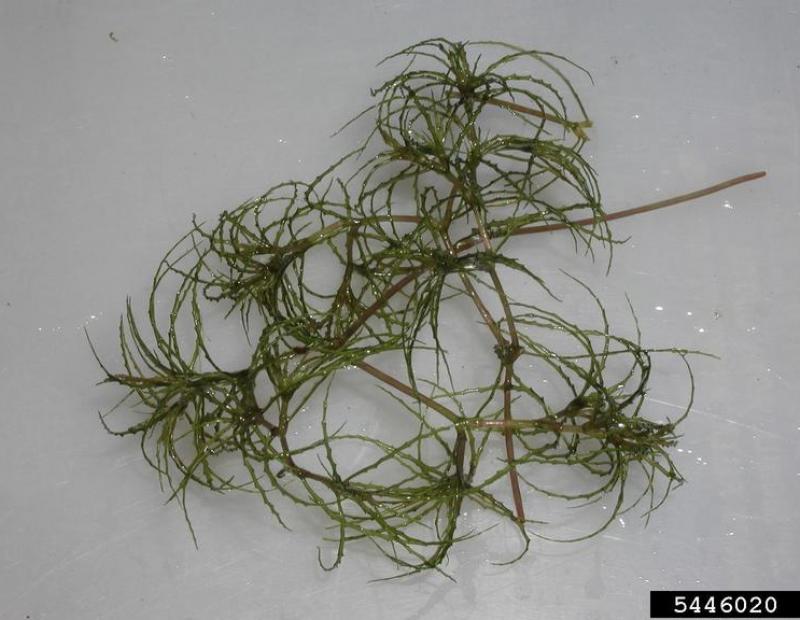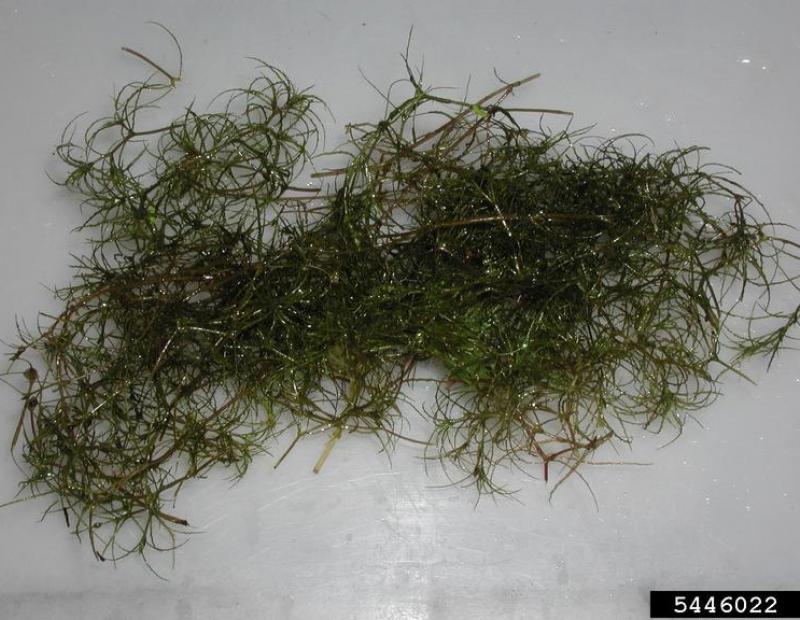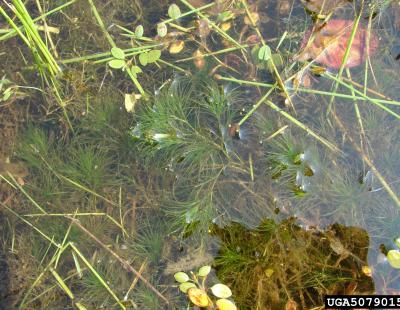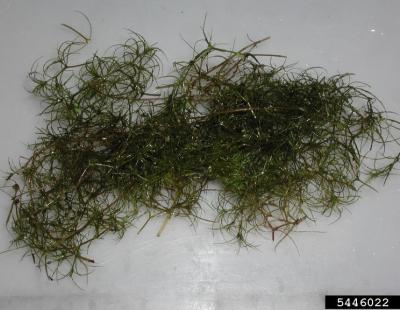- Aquatic Invasives
- Plants
Najas minor grows earlier in the season than many native plants, and gain an advantage for survival by accessing necessary light and nutrients with no competition for resources. Because of their quick growth early on, these plants crowd out native plants and prevent them from receiving sunlight and space for growth. Dense communities of these plants can produce unfavorable environments for fish and waterfowl, potentially displacing them, as well as the plants they directly displace. They've also been noted to increase sedimentation rates and clog waterways in several states. In regards to humans, brittle naiad can reduce recreational value of waterways as well as the aesthetic value of nearby scenic locations.
This plant spreads through its seeds or fragmentation. Waterfowl transport the seeds and further the species' spread. These plants have highly branched stems that fragment easily, allowing transportation with water movement. Humans often aid in their transportation by spreading fragments and seeds that get onto boats and boat trailers.
Brittle naiad, also known as brittle waternymph, originates from Europe, western Asia, and northern Africa, and was likely introduced into the United States in the 1930's by shipping through large bodies of water, or was accidentally introduced with cultivation of other species. Today it has established populations in atleast 26 states, predominantly East of the Mississippi River.
Najas minor is an annual plant that can thrive being rooted or live successfully floating in bodies of water. Usually observed as a compact bushy plant, they have highly branched stems that can grow up to 4 ft. in length. The leaves of the plant are seen in bunches along the stem, and are long and narrow. The leaves of this naiad are opposite, curved, stiff, pointed and have noticable spines along margins.
Brittle naiad thrives in slow-moving or stagnant waters. They are found most frequently in ponds, lakes, reservoirs and canals. They have capabilities to grow in areas up to four meters deep. It has higher tolerance to variables in water such as turbidity,pollution, and eutrophic conditions than many native plants, and displaces them because of their tolerance. This plant is widespread through the Lower Hudson region, and have no regulation in New York state.







